Here is a link to my final evaluation prezi
http://prezi.com/qfnoonu2rjcj/martin-campbells-media-evaluation/
My media evaluation on Prezi
15 years ago
This blog will show my progression through the AS media course
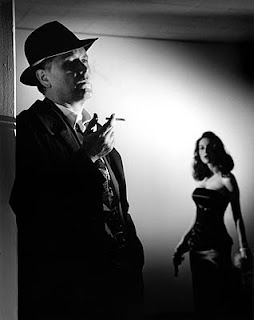 this picture shows alot of typical things you would expect to see from film noir such as the darkness, the black and white colour depths and also some key character that are typical of film noir such as the Femme fatal. the cigarette can also act as a signifier to film noir.
this picture shows alot of typical things you would expect to see from film noir such as the darkness, the black and white colour depths and also some key character that are typical of film noir such as the Femme fatal. the cigarette can also act as a signifier to film noir. 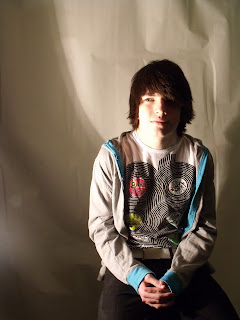 This picture we took by only using a light on one side of the shot. This creates a shadow across the other half of the face which can be a very effective camera technique for creating mystery and confusion. It also follows the typical conventions of film noir with the darkness.
This picture we took by only using a light on one side of the shot. This creates a shadow across the other half of the face which can be a very effective camera technique for creating mystery and confusion. It also follows the typical conventions of film noir with the darkness.  This picture just like the one above shows only half of the face to help keep with the dark and mysterious themes of film noir.
This picture just like the one above shows only half of the face to help keep with the dark and mysterious themes of film noir. 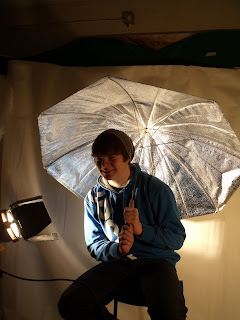 This was a fairly experimental image that we attempted to see how the light would reflect off the umbrella and the effects it would have on the image. effects similar to this are used often in films by usually reflecting very powerful lights off of objects such as ceilings to give a particular lighting texture or effect.
This was a fairly experimental image that we attempted to see how the light would reflect off the umbrella and the effects it would have on the image. effects similar to this are used often in films by usually reflecting very powerful lights off of objects such as ceilings to give a particular lighting texture or effect. The silhouette is a common image used in the horror and film noir genres. It creates an impression of mystery and darkness which often makes the audience curious to continue watching something to see who it is and why they are portrayed so darkly and mysteriously. To take this shot we used a powerful light right behind the person to give out alot of light behind him creating this effect.
The silhouette is a common image used in the horror and film noir genres. It creates an impression of mystery and darkness which often makes the audience curious to continue watching something to see who it is and why they are portrayed so darkly and mysteriously. To take this shot we used a powerful light right behind the person to give out alot of light behind him creating this effect.  In this image there is a strong light coming from behind the doorway to create this silhouette while the rest of the scene is in darkness.
In this image there is a strong light coming from behind the doorway to create this silhouette while the rest of the scene is in darkness.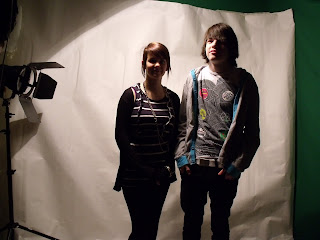 This picture shows these two people with a light coming from above them to create a mild shadow across there faces and body. This is another common film noir lighting technique which we would consider using in our production.
This picture shows these two people with a light coming from above them to create a mild shadow across there faces and body. This is another common film noir lighting technique which we would consider using in our production. 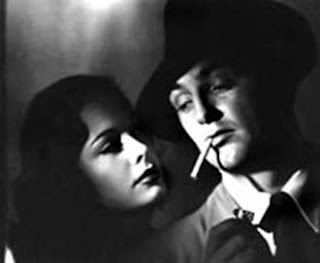 This picture like the last one also shows two people with a light above them to create shadows across their faces and shoulders.
This picture like the last one also shows two people with a light above them to create shadows across their faces and shoulders.  This image was taken with the light shining from above him. This does a strange effect to the shadow on the floor which can clearly be seen in the picture.
This image was taken with the light shining from above him. This does a strange effect to the shadow on the floor which can clearly be seen in the picture. 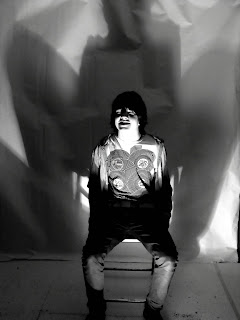 This image has the light coming from underneath him to create a huge and unnatural shadow behind the man. This is another potent lightning effect which could be used in our final production.
This image has the light coming from underneath him to create a huge and unnatural shadow behind the man. This is another potent lightning effect which could be used in our final production. 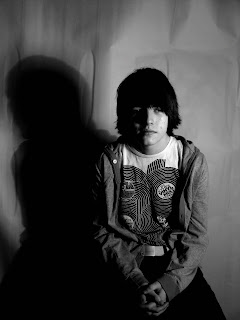 This image has the light shining from the right of the picture creating a nice clear shadow to the left of the picture. This is another useful lighting technique that is commonly used.
This image has the light shining from the right of the picture creating a nice clear shadow to the left of the picture. This is another useful lighting technique that is commonly used.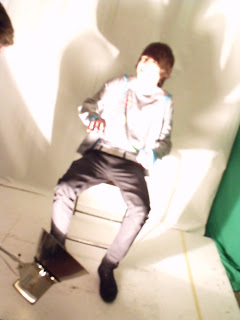 This image has the light shining directly towards the person in the exact opposite way of the silhouette. Yet it can create the same sort of effect by making it impossible to see the person. This is a unnatural yet effective lightning technique which can be used to create mystery. .
This image has the light shining directly towards the person in the exact opposite way of the silhouette. Yet it can create the same sort of effect by making it impossible to see the person. This is a unnatural yet effective lightning technique which can be used to create mystery. .  PG :Harry Potter and the Philosopher's stone (2001) A young boy with a great destiny proves his worth while attending Hogwarts School of Witchcraft and Wizardry.
PG :Harry Potter and the Philosopher's stone (2001) A young boy with a great destiny proves his worth while attending Hogwarts School of Witchcraft and Wizardry.